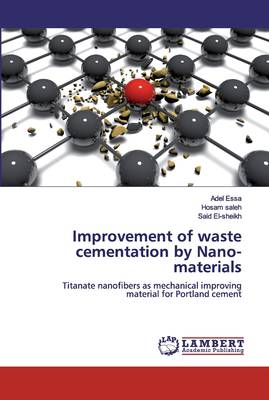
- Afhalen na 1 uur in een winkel met voorraad
- Gratis thuislevering in België vanaf € 30
- Ruim aanbod met 7 miljoen producten
- Afhalen na 1 uur in een winkel met voorraad
- Gratis thuislevering in België vanaf € 30
- Ruim aanbod met 7 miljoen producten
Zoeken
€ 60,95
+ 121 punten
Omschrijving
Innovative cement-based composites are recently strongly emerging technology. Nanotechnology is one of the potential alternatives to improve cement characteristics and to decrease the amount of cement used in various applications, which consequently reduces the energy required for cement production and carbon dioxide emission caused by cement industry. In this book, some approaches for improvement of cement were conducted. Incorporation of waste materials or small amounts of prepared inexpensive nanomaterials was considered in this study as a viable strategy for cement reinforcement. Iron slag as waste material and titanate nanofibers were introduced to cement paste separately or as a mixture to evaluate the mechanical, morphological and chemical properties of the solidified cement blend. The produced composite prepared from Portland cement, iron slag and small amounts of titanate nanofibers has subjected towards several mechanical, physical and chemical testing after drastic events; based on the elaborated results, the new composite formulation can be suggested as matrix both for safe immobilization of hazardous wastes and as a valuable material to be used in building industry.
Specificaties
Betrokkenen
- Auteur(s):
- Uitgeverij:
Inhoud
- Aantal bladzijden:
- 100
- Taal:
- Engels
Eigenschappen
- Productcode (EAN):
- 9786200315458
- Verschijningsdatum:
- 20/09/2019
- Uitvoering:
- Paperback
- Formaat:
- Trade paperback (VS)
- Afmetingen:
- 152 mm x 229 mm
- Gewicht:
- 158 g

Alleen bij Standaard Boekhandel
+ 121 punten op je klantenkaart van Standaard Boekhandel
Beoordelingen
We publiceren alleen reviews die voldoen aan de voorwaarden voor reviews. Bekijk onze voorwaarden voor reviews.











